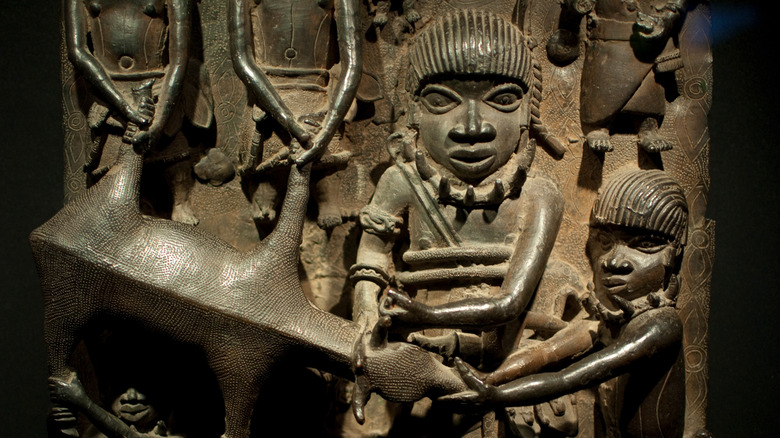Who Really Built The Walls Of Benin?
In southern Nigeria, on the banks of the murky Benin River, lays the city of Edo, formerly known as Benin City. From the 12th century it had been one of the major capitals of West Africa, the seat of the Kingdom of Benin (whose borders were not the same as the modern-day republic that shares its name). Benin City was a prosperous town of artisans, famous for its brasswork, ivory carving, and woodcarvers guild (via Britannica). In 1897, the British colonial army razed the old city of Benin, carrying off many of its treasures and leaving much of the old town a smoking ruin. Modern Edo sits atop the older town.
For hundreds of years, European visitors to Benin City consistently wrote about the walls that girded the town and its territories. They were, as Historic Mysteries reports, one of the biggest manmade structures in the world. They were reputedly 60 feet (18 meters) high and fenced in about 460 square miles (almost 1,200 square kilometers). Today only portions of the old wall exist, eaten away by erosion, war, and the growth of modern Edo.
Massive walls and moats
Per Historic Mysteries, the first Europeans to lay eyes on the walls of Benin were the crew of the "Portuguese Achilles," explorer Duarte Pacheco Pereira, around the year 1500. About 100 years later, the Dutch explorer Dierick Ruiters wrote his own account of them.
There are some notable discrepancies between Pacheco Pereira's and Ruiters' reports: Pereira said that Benin City had a massive, water-filled moat instead of a wall, while Ruiters saw wide mud walls and an unfilled moat. There are several possible reasons for this. It's possible the walls went up after the year 1500, or that Pacheco Pereira was looking at the city from such a distance that he couldn't quite make out the walls. What remains of the walls indicates a combination of sophisticated urban planning and simple building techniques. Each wall was made of packed earth, and sat flush with the ditch from which the earth was extracted (this was likely the moat that the explorers reported).
With a crew of 2,500 men working 10-hour days, the massive enterprise would still take well over six months. Historic Mysteries quotes Ron Eglash of the University of Michigan as saying that the footprint of the walls, and indeed the old town of Benin, formed a fractal pattern.
Today the ditches or moats are all filled in. The wall itself has been eaten away in recent years by real estate development — a sad fate for West Africa's Great Wall of China.

